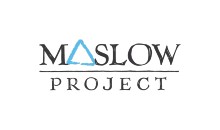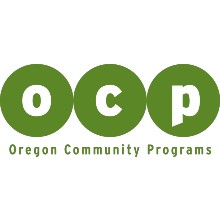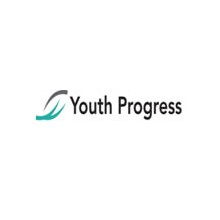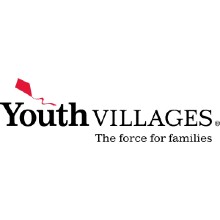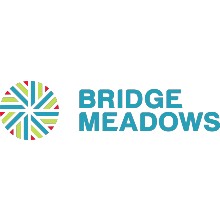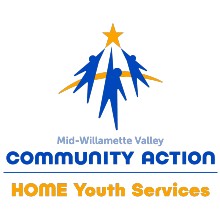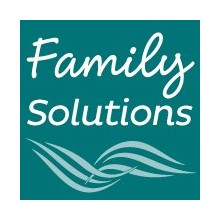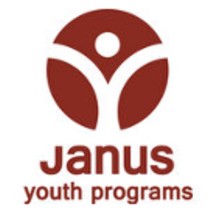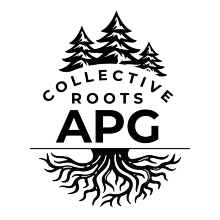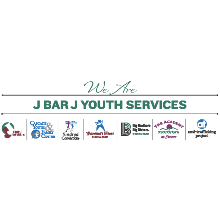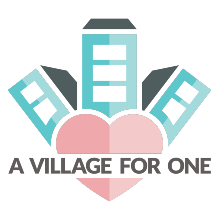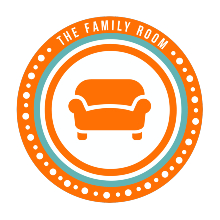Resources and Research
Upstream Prevention
Culturally Responsive Care
LGBTQIA+
Adverse Childhood Experiences (ACEs)
Youth Mental Health and Suicide
Reproductive and Maternal Health
Human Services Workforce
Substance Use Treatment
Youth Experiencing Homelessness
Juvenile Justice
Other Resources
Upstream Prevention
Fast Facts: It is essential that safety nets exist to catch members of our community in crisis—however, it is also important to consider the many social and structural factors that can either cause or prevent these crises.
- Consistent access to high-quality education is a buffer to a variety of negative outcomes stretching into adulthood, including juvenile justice system involvement, homelessness, and unemployment. (OJJDP, USICH)
- Prolonged poverty in childhood and adolescence is associated with range of lifelong consequences:
- Children who spend 8-14 years in poverty are five times more likely to experience poverty at age 35 compared to those who spent seven or fewer years in poverty in their youth. (National Center for Children in Poverty)
- Children from lower income families have higher rates of psychological stress and deficits in short-term memory as adults. (Psychological and Cognitive Science)
- Children who experience poverty are more likely to experience a variety of health-related problems as adults—particularly cardiovascular disease and type II diabetes. (Maturitas)
- Youth homelessness is the single most common pathway to adult homelessness. (PSU)
- Experiences of racism and trauma during childhood are associated with suicidal ideation in adulthood among Black men. (Cultural Diversity & Ethnic Minority Psychology)
Articles and Resources: Below is a list of articles and other resources that demonstrate importance of prevention in improving outcomes for young people.
Back to List of Topics
Culturally Responsive Care
Fast Facts: Given the racial, ethnic, and cultural disparities in Oregon’s foster care, mental health, and juvenile justice systems, it is essential that the services be responsive to the identities and needs of all of our young people.
- Black youth make up 3.8% of Oregon’s child population, but 7.1% of Oregon’s foster care population (2021 Child Welfare Databook)
- In 2019, Black youth were three times more likely than white youth to be referred for criminal charges, and six times more likely to be transferred to Adult Court.*
- Native American youth make up 1.5% of Oregon’s child population, but 4.7% of Oregon’s foster care population, and are referred for criminal cases at a rate that’s more than twice as high as that of white youth. (2021 Child Welfare Databook)
- Black and brown systems-involved youth are disproportionately diagnosed with certain mental health conditions such as disruptive disorders, bipolar disorder, and psychosis.
*Note that this data is from 2019, as the data-gathering process changed significantly during the COVID-19 pandemic, making cross-year comparisons difficult.
Data: Below is a list of Oregon-specific data sources underscoring the need for more culturally-responsive services.
- County-by-County Juvenile Justice Racial and Ethnic Disparity Reports (Click Here)
- ODHS Children’s System of Care Dashboard (Click Here)
- Annie E. Casey Kids Count Data Center (Click Here)
Articles and Resources: Much work still needs to be done to clarify the definition of culturally responsive services, and to identify the specific mechanisms by which such services improve outcomes.
Back to List of Topics
LGBTQIA+ Youth
Fast Facts: Despite growing support for young people who are lesbian, gay, bisexual, transgender, queer, questioning, intersex, asexual, or who identify with other experiences of gender and sexual identity, LGBTQIA+ youth still face a host of obstacles to living happy, healthy lives.
- A survey conducted by the Trevor Project of more than 28,000 LGBTQ youth found that…
- Less than 2 in 5 LGBTQ youth found their home to be LGBTQ-affirmative.
- More than 2 in 5 LGBTQ youth seriously considered suicide in the past year.
- Approximately 1 in 6 transgender women, and 1 in 4 transgender men attempted suicide in the past year.
- A 2019 survey of high school juniors in Oregon found that approximately 13% identified as lesbian, gay, bisexual, and another 10% said they identified with another sexual orientation or were unsure about their sexual orientation. (Oregon Healthy Teens Survey)
Data, Articles & Resources: Below is a list of reports, news articles, and other data sources describing the challenges LGBTQIA+ youth experience, as well as possible solutions:
Trainings: The Center for Excellence is currently offering the following trainings for providers supporting LGBTQIA+ youth.
Back to List of Topics
Adverse Childhood Experiences (ACEs)
Fast Facts: Adverse Childhood Experiences (ACEs) are “potentially traumatic events that occur in childhood,” including (but not limited to) experiencing or witnessing violence, abuse, neglect, or loss of a family member. (CDC)
- By the age of 18, anywhere between 45 and 65% of children and adolescents have experienced at least one ACE. (BMC Public Health, CDC)
- Black and Hispanic children in Oregon are 50% and 20% more likely to experience ACEs than non-Hispanic white children. (2019 National Survey of Children’s Health)
- The percentage of Oregon children with at least one ACE is 7% higher than the national average.
- Experiencing ACEs in childhood is associated with development of chronic diseases like obesity and autoimmune disease, as well as behavioral challenges like depression and substance use disorder later in life. (National Conference of State Legislatures)
- One study estimated the annual cost of child abuse and neglect (in quality-adjusted life years, and government/nonprofit spending) to be more than $2 trillion. (Child Abuse & Neglect)
Data: Below is a list of data sources that offer insights into the prevalence and consequences of ACEs.
- Behavioral Risk Factor Surveillance System (BRFSS) ACE Data (CDC)
- Data Resource Center for Child & Adolescent Health (CAHMI)
- Social Determinants of Health: Adverse Childhood Experiences (OHA)
- Note that this is an Oregon-specific summary of data pulled from the BRFSS survey linked above.
Articles and Resources: The body of research into the prevalence and consequences of ACEs has exploded since the original ACEs study in 1998.
- Trauma-Focused Cognitive Behavioral Therapy for Traumatized Children, 2015 (Click Here)
- Navigating Adverse Childhood Experiences (ACEs) in American Indian Communities, 2023 (Click Here)
- Three Principles to Improve Outcomes for Children and Families, 2021 (Click Here)
Back to List of Topics
Youth Mental Health and Suicide
Fast Facts: Of all 50 states and the District of Columbia, Oregon is ranked 45th in Mental Health America’s unmet youth mental health need composite score.
- Despite a recent decline, suicide remains the second leading cause of death for youth between ages five and 24 (OHA).
- The rise in youth depression and anxiety observed through and after the COVID-19 pandemic was particularly dramatic in Oregon. (2022 KIDS COUNT Oregon State Data)
Data: There are a variety of different federal agencies and national organizations that collect data on youth mental health and suicide. Below are some resources generated by these efforts.
Articles and Resources: Research into the prevalence, prevention, and intersectionality of youth mental health crises and trauma is ongoing. Below are links to some of this research, as well as some potential resources.
- Lines for Life Hotline: Call or text 988
- Witnessing Community Violence, Gun Carrying, and Associations with Substance Use and Suicide Risk Among High School Students, 2023 (Click Here)
- Suicidal Thoughts and Behaviors Among High School Students, 2023 (Click Here)
- School-based mental health services, suicide risk and substance use among at-risk adolescents in Oregon, 2018 (Click Here)
Trainings: The Center for Excellence is currently offering the following trainings for providers related to youth mental health and suicide.
- Youth Mental Health First Aid (January 25, 2024)
- Applied Suicide Intervention Skills Training (February 23 & 24, 2024)
Back to List of Topics
Reproductive and Maternal Health
Fast Facts: By age 16, approximately one in three Oregon adolescents have had some form of sex or sexual contact—but sexual and reproductive health disparities continue to exist for some groups of young people. (Oregon Student Health Survey, Pathways RTC & OHA)
- Even as general contraception use rates are going up for adolescents, use of condoms and other barrier methods is declining. (Contracept X, Guttmacher Institute, Youth Risk Behavior Survey)
- Though Oregon has a relatively low teen pregnancy rate, Black, American Indian/Alaska Native, and Hispanic adolescents are 2.4, 1.3, and 2.2 times more likely (respectively) than white adolescents to experience teen pregnancy. (OHA)
- Black teens who become pregnant are more likely to have adverse pregnancy outcomes such as preterm birth. (Pediatric and Perinatal Epidemiology)
Data: The Oregon Health Authority collects and publishes its data on teen abortions and pregnancies—though, it should be noted, some of this data may be out of date.
Articles and Resources: Below is a list of reports, news articles, and other data sources describing the state of adolescent sexual and reproductive health.
- Sexual Health Disparities Among Disenfranchised Youth (Pathways RTC & OHA)
- Scorecard on State Health System Performance (Commonwealth Fund)
- Explanation of the Reproductive Health Equity Act (OHA)
- HPV Infection and Prevention: A Guide for Parents (OHA)
Back to List of Topics
Human Services Workforce
Fast Facts: Turnover among mental health, behavioral health, foster care, and other human service providers has been a persistent struggle impacting Oregon’s children, youth, and families. The Center for Excellence is undertaking several projects in this space (see Our Projects).
Articles and Resources: Interdisciplinary data and resources describing challenges faced by the human services workforce are uncommon. The Center for Excellence is actively working to better-understand these challenges, as well as some possible solutions.
Back to List of Topics
Substance Use Treatment
Fast Facts: In 2019, 5.8% of Oregonian teenagers (ages 12-17), and 17.5% of Oregonian young adults (ages 18-25) were estimated to meet criteria for substance use disorder—both significantly higher than the national average. (SAMHSA)
- Despite decades of progress in reducing smoking rates for adolescents and young adults, use of e-cigarettes increased nearly 80% between 2017 and 2019 (National Center for Chronic Disease Prevention and Health Promotion, OHA)
- Use of illicit drugs by teenagers in Oregon was approximately 11% between 2017 and 2019 (SAMHSA)
- Less than half of Oregonians with a substance use disorder have been diagnosed or treated (OHA, ADPC, & OHSU)
- More than half of treatment facilities in Oregon identify lack of staffing as a key driver of long wait times and poor access to treatment (OHSU)
Data: A handful of databases exist to track behavioral health and addiction statistics for Oregon, including the databases linked below.
- Oregon Substance Use Disorder (SUD) Services Inventory & Gap Analysis (Click Here)
- Data Portal: Drug prevention in Oregon classrooms (Click Here)
- National Survey on Drug Use and Health (Click Here)
- 2024's Top Rehab Centers in Portland (Click Here)
Back to List of Topics
Youth Experiencing Homelessness
Fast Facts: Defining and measuring the percentage of youth experiencing homelessness can be difficult, but nearly all metrics show that Oregon is well behind the rest of the country in providing safe, reliable housing for young people.
- During the 2019/2020 school year, Oregon Public Schools identified 22,000 students who were experiencing homelessness—approximately 3.7% of all enrolled students that year. (National Center for Homeless Education)
- A statewide needs assessment conducted by the Corporation for Supportive Housing estimated that more than 3,000 children and teenagers, as well as nearly 5,000 young adults were in need of safe, affordable housing and services in 2021 (CSH)
- Nearly 3 in 5 people in families with children that are experiencing homelessness in Oregon are unsheltered—this is the highest rate in the country (HUD)
- This percentage is even higher (72%) in Central Oregon
- Oregon also has the highest percentage of unaccompanied youth experiencing unsheltered homelessness of any state (70%)
Data: A variety of different organizations and government agencies track youth homelessness; below are some of these datasets.
Articles and Resources: Below is a list of articles and resources describing the nature of the challenges faced by youth experiencing homelessness.
- Experiences of Unstable Housing Among High School Students, 2023 (Click Here)
- Youth Homelessness Overview, 2023 (Click Here)
- Runaway and Homeless Youth: Demographics and Programs, 2019 (Click Here)
Back to List of Topics
Juvenile Justice
Fast Facts: The Oregon Youth Authority releases regular updates on the number of youth in its custody. (Click Here)
- As of January, 2024, 907 youth were in OYA custody—over half of which were either on parole or probation
- 13% of the juvenile justice population is Black, while just 4% of all youth are Black
- 54% of boys, and 77% of girls in the juvenile justice population have an experience of abuse or neglect
- Nationwide, there has been a 77% drop in youth incarceration since 2000—though racial disparities have persisted through the decline (OJJDP)
- Oregon's youth placement rate is the 8th highest in the nation (The Sentencing Project)
Data and Resources: Below is a list of articles and resources describing the nature of the challenges faced by justice-involved youth.
- Youth and the Juvenile Justice System: National Report (Click Here)
- Statistical Briefing Book – OJJDP (Click Here)
- Youth Involved with the Juvenile Justice System (Click Here)
- Racial and Ethnic Disparities Reports – OYA (Click Here)
- Program Profile: Juvenile Breaking the Cycle (JBTC) Program (Click Here)
Back to List of Topics
|



